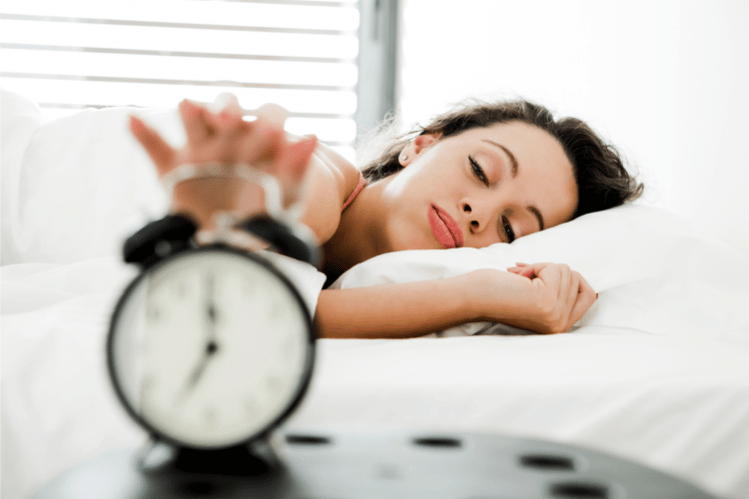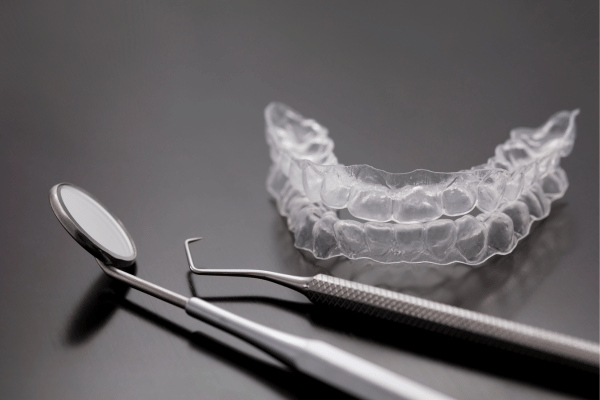
Table of contents
-
Everything You Need to Know About Night Time Aligners
-
What Are Night-Time Aligners?
-
Benefits of Choosing Night-Time Aligners
-
How Do Night Time Aligners Work?
-
Traditional vs. Night Time Aligners
-
Who Is the Ideal Candidate for Night-Time Aligners?
-
Do Night Time Aligners Actually Work? What are Benefits and Considerations
-
How to Care for Your Night-Time Aligners
-
How to Wear Night-Time Aligners for Optimal Results
-
Discover Your Smile Potential with SmilePath NightOnly Aligners
-
Conclusion
-
FAQs
In the evolving world of orthodontics, night-time aligners have emerged as a groundbreaking solution for those looking to straighten their teeth discreetly and conveniently. This blog delves into everything you need to know about night-time aligners, from their functionality to the unique benefits they offer.
What Are Night-Time Aligners?
Night-time aligners are a type of orthodontic device designed to straighten your teeth while you sleep. Unlike traditional braces or standard clear aligners that you wear throughout the day, these aligners are specifically engineered for overnight use, offering a more flexible approach to teeth straightening. Night-time aligners are crafted from durable, medical-grade thermoplastic materials, designed for comfort and effectiveness in gently realigning your teeth while you sleep.
Benefits of Choosing Night-Time Aligners
- Convenience: Ideal for busy individuals, allowing orthodontic treatment without daytime wear.
- Discretion: Perfect for those who prefer not to wear aligners during social or professional engagements.
- Comfort: Minimizes discomfort and adjustment periods, as most of the alignment process occurs while sleeping.
How Do Night Time Aligners Work?
Night-time aligners apply gentle pressure to your teeth, gradually moving them into the desired position over time. For optimal results, they must be worn for a recommended period each night, usually between 8-10 hours, making them a viable option for deep sleepers or those who do not wish to commit to full-day aligner schedules.
Traditional vs. Night Time Aligners
The primary difference between traditional and night-time aligners lies in their wear time and treatment duration. Traditional aligners, worn for at least 22 hours a day, generally promise faster and more comprehensive results, suitable for a wide range of orthodontic issues. In contrast, night-time aligners require at least 10 consecutive hours of wear, mostly during sleep, extending the treatment period but offering unparalleled convenience.
Who Is the Ideal Candidate for Night-Time Aligners?
Ideal candidates for night-time aligners are individuals with mild to moderate alignment issues. They're particularly suited for adults and teens looking for a less intrusive method to improve their smile. A consultation with an orthodontist is necessary to determine if night-time aligners are suitable for your specific dental needs.

Do Night Time Aligners Actually Work? What are Benefits and Considerations
Yes, night-time aligners are effective, especially for patients with mild alignment issues. However, their efficacy is generally less compared to full-time wear aligners due to the reduced wear time. The success of night-time aligners relies on the consistent application of orthodontic pressure during sleep, necessitating disciplined adherence to the prescribed wear time.
Benefits of Choosing Night-Time Aligners
- Privacy: They offer a discreet way to improve your smile without daytime wear.
- Convenience: No need to remove aligners during daytime eating or drinking.
- Comfort: Avoids the daytime discomfort and adjustment period associated with traditional aligners.
Considerations Before Choosing Night Time Aligners
- Treatment Duration: Night-time aligners may require a longer treatment period compared to full-day wear options.
- Discipline: Consistent nightly use is essential for achieving desired results.
- Oral Health: Maintaining excellent oral hygiene is critical, as the risk of cavities and gum disease can increase with any orthodontic treatment.
How to Care for Your Night-Time Aligners
Proper care is crucial to maintaining the effectiveness and longevity of your night-time aligners. This includes regular cleaning with a soft brush and non-abrasive toothpaste, rinsing them with water before use, and storing them in a protective case during the day.
How to Wear Night-Time Aligners for Optimal Results
- Initial Setup: Take impressions of your teeth using an impression kit and send them to your provider. Custom aligners are then created based on your dental impressions.
- Wearing Schedule: Wear your aligners for at least 10 consecutive hours each night, progressing through each set as directed.
- Treatment Duration: Typically, wear each aligner set for two weeks, gradually moving teeth to their correct position over about 10 months.
Discover Your Smile Potential with SmilePath NightOnly Aligners
Transform your smile effortlessly with SmilePath NightOnly Aligners, blending affordability with the convenience of at-home treatment. Take the first step towards a confident smile by taking our free assessment today. Experience the ease of personalized orthodontic care designed to fit into your nighttime routine seamlessly. Begin your journey to a straighter smile with SmilePath, where your dream smile is just a sleep away.
Conclusion
Night-time aligners offer a convenient and effective solution for those seeking to straighten their teeth with minimal daytime interference. By understanding the benefits, considerations, and care requirements, you can make an informed decision on whether night-time aligners are the right choice for your orthodontic needs.
FAQs
Typically, night-time aligners should be worn for 8-10 hours per night to achieve the best results.
Night-time aligners are most effective for mild to moderate dental misalignments. Severe cases may require traditional orthodontic treatments.
The cost of night-time aligners can be comparable to traditional braces or standard clear aligners, but it varies based on treatment complexity and duration.
Most users adapt quickly to wearing aligners at night, with minimal impact on their sleep quality.


 Australia
Australia New Zealand
New Zealand Malaysia
Malaysia English
English Portuguese
Portuguese English
English English
English English
English English
English English
English Canada
Canada